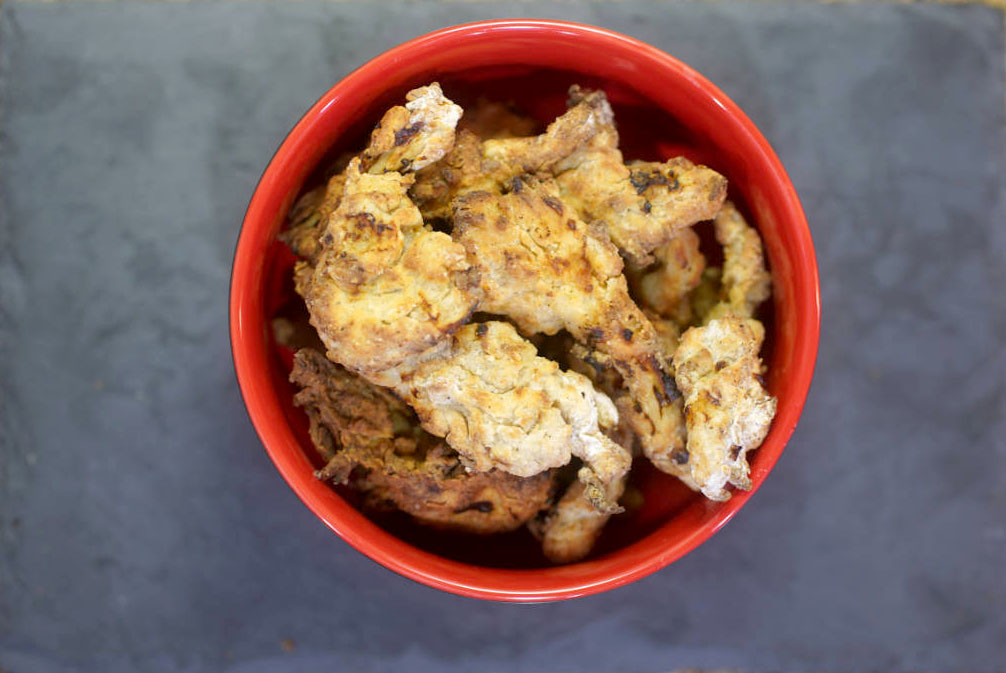Foraging for wild mushrooms is insanely different from foraging for potato crisps in your boyfriend’s pantry.
The line between a delightful dish and a perilous misstep can be as thin as the stem of an Enoki.
In this article, we will demystify the pursuit of mushroom foraging and equip you with a beginner’s knowledge to safely distinguish between the fungal bounties of nature and its banes.
Call of the Wild Mushroom
There is something so rewarding about whipping up a wild mushroom risotto with fresh mushrooms that you found. Besides being able to find mushrooms you don’t usually see at the grocers, wild mushrooms tend to have amazing flavors, ranging from the rich nuttiness of a Chantarelle to the intense umami of a Morel. However, these appeals come with a caveat: the existence of toxic doppelgängers that can cause serious health issues.
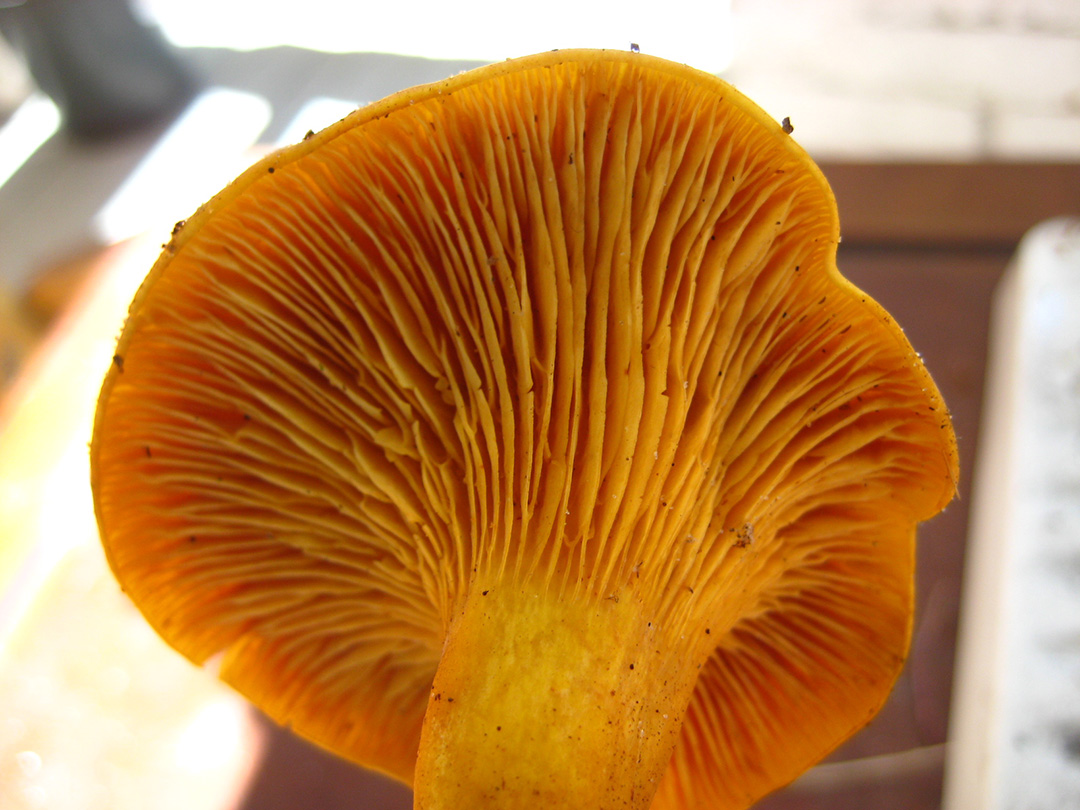 This poisonous Jack-o’-Lantern pictured here has finer, denser gills than the friendly Chanterelle
This poisonous Jack-o’-Lantern pictured here has finer, denser gills than the friendly Chanterelle
The 5 Golden Rules of Mushroom Foraging
1. NEVER consume without certainty
The most inviolable rule of mushroom foraging is to never, under any circumstance, consume a mushroom unless you are 100% certain of its identity. Mistakes in identification can have severe consequences, including liver failure, and in extreme cases, death.
2. Learn to spot the look-alikes
Many edible mushrooms have toxic imitators. The infamous case of the edible Chanterelle and its poisonous twin, the Jack-o’-Lantern mushroom, underscores the importance of knowing how to tell the two apart.
3. Start with the easy ones
Begin your foraging journey with mushrooms that have few or no dangerous look-alikes, such as Chicken of the Woods, Wood Blewits, or Lion’s Mane. This reduces the risk while you hone your identification skills.
4. When in doubt, throw it out
Yes, this is the same thing as #1. It’s that important. If you have any uncertainty about a mushroom’s identity, err on the side of caution and dispose of it. No culinary experience is worth the risk of mushroom poisoning.
5. Love the environment
Ensure that your foraging practices are sustainable and respectful of local ecosystems. Overharvesting and damaging habitats can have detrimental effects on mushroom populations, causing knock-on effects up the food chain.
 Mushrooms provide valuable sustenance for many food chain consumers like squirrels
Mushrooms provide valuable sustenance for many food chain consumers like squirrels
Tools of the Trade
Equip yourself with a few essential tools to enhance your foraging experience:
- Field guide or mushroom identification app specific to your region
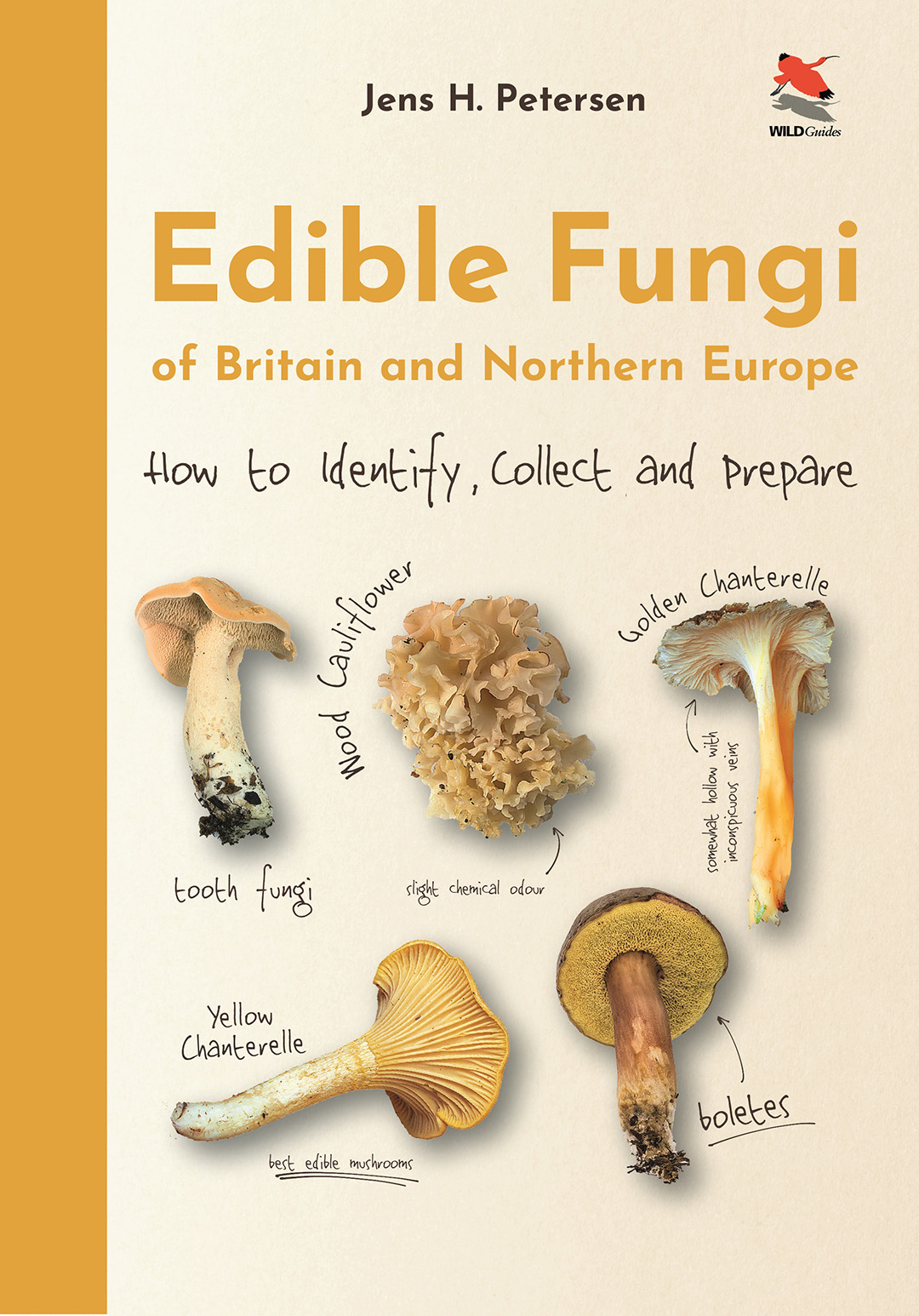 Petersen’s guide is a fantastic starting point
Petersen’s guide is a fantastic starting point
- Basket or mesh bag to allow spores to disperse as you forage, promoting mushroom propagation
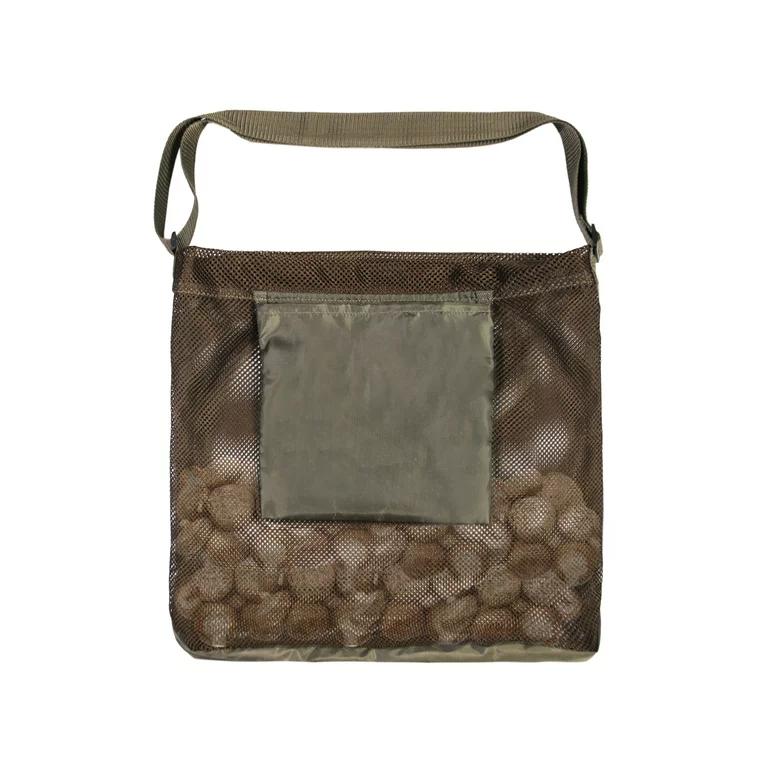 Mesh foraging bags can be easily found at your favorite online marketplaces
Mesh foraging bags can be easily found at your favorite online marketplaces
- Small knife for cleanly cutting mushrooms, preserving the mycelium for future growth
 Something like this is all you need. No, the bottle opener is not necessary, but is a pleasant addition.
Something like this is all you need. No, the bottle opener is not necessary, but is a pleasant addition.
Commonly Foraged Mushrooms with Poisonous Counterparts
Morel (Morchella spp.) and False Morel (Gyromitra spp.)
True Morels are highly prized for their nutty flavor. They have a distinctive honeycomb appearance on their cap. False Morels can contain gyromitrin, a toxic compound that is potentially carcinogenic and neurotoxic.
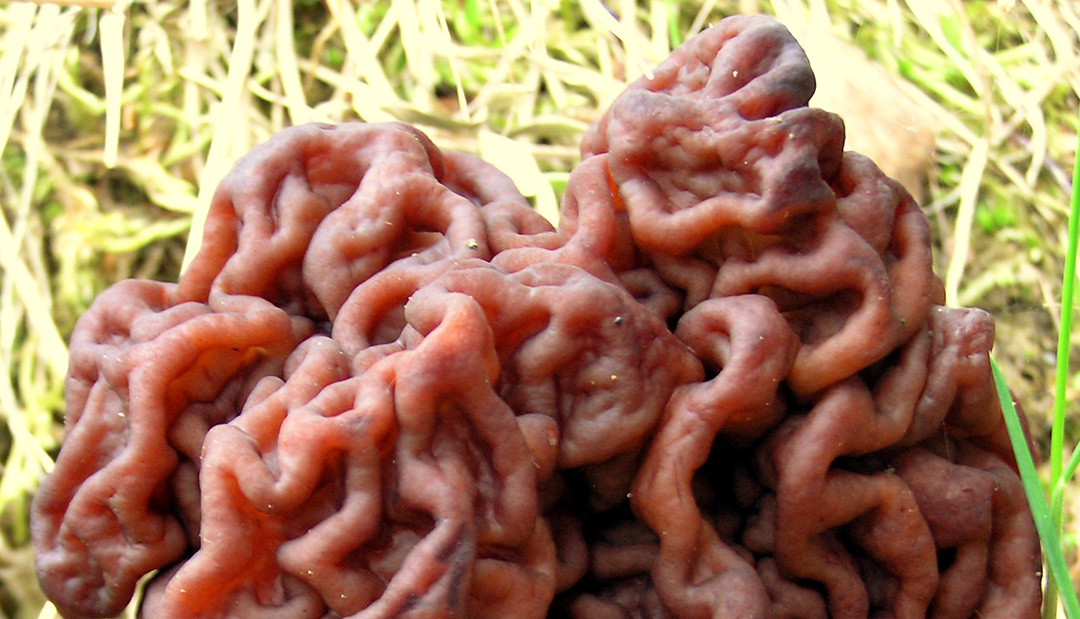 Prime example of the brain-like texture of a poisonous False Morel. True Morels have a honeycomb pattern, however not all cases will be this obvious.
Prime example of the brain-like texture of a poisonous False Morel. True Morels have a honeycomb pattern, however not all cases will be this obvious.
Chanterelle (Cantharellus spp.) and Jack-o’-Lantern Mushroom (Omphalotus olearius)
Chanterelles are sought after for their delicious taste and golden hue. They can be confused with the Jack-o’-Lantern mushroom, which is toxic and glows in the dark (bioluminescent). The gills of the Jack-o’-Lantern are much finer and denser than the blunt, forked ridges of the chanterelle.
 Glowing gills of a poisonous Jack-o’-Lantern mushroom
Glowing gills of a poisonous Jack-o’-Lantern mushroom
Puffball (Lycoperdon spp.) and Earthball (Scleroderma spp.)
Edible puffballs, when young, are solid white inside. They should be avoided if any other color is present inside. Earthballs are toxic and have a dark, dense spore mass inside, unlike the uniform white flesh of puffballs.
 Poisonous Earthball with a dark spore mass inside
Poisonous Earthball with a dark spore mass inside
Field Mushroom (Agaricus campestris) and Yellow-Staining Mushroom (Agaricus xanthodermus)
The common field mushroom is a popular edible species, but it can be mistaken for the yellow-staining mushroom, which, as the name suggests, turns yellow when bruised or cut and can cause gastrointestinal upset.
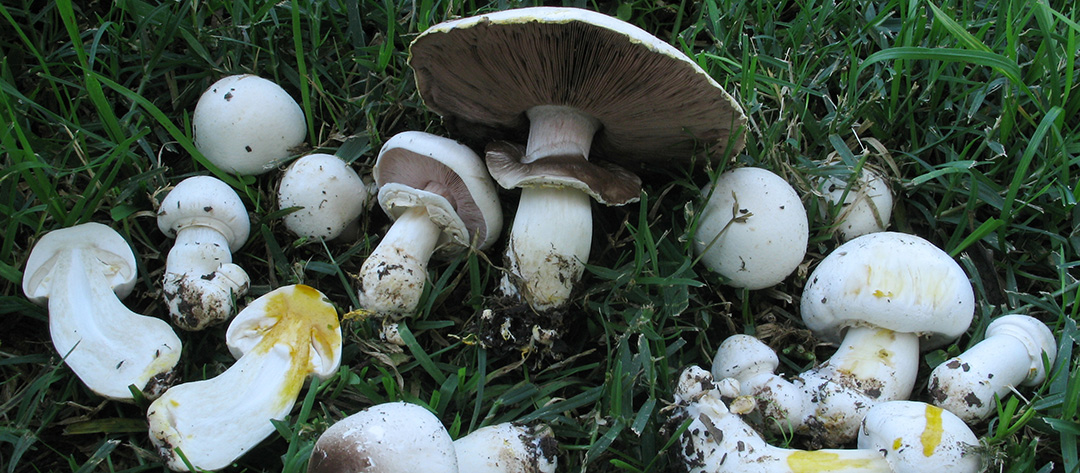 These poisonous Yellow-Staining Mushrooms will turn fully yellow when cooked and emit a strong phenol odor. At least it gives fair warning!
These poisonous Yellow-Staining Mushrooms will turn fully yellow when cooked and emit a strong phenol odor. At least it gives fair warning!
Into The Wild
Foraging for our food connects us to the earth, teaches us patience and diligence, and when done safely, provides a delicious reward for our efforts. Here’s to the thrill of the hunt and the joy of a safely harvested wild feast.. Go forth and forage!




